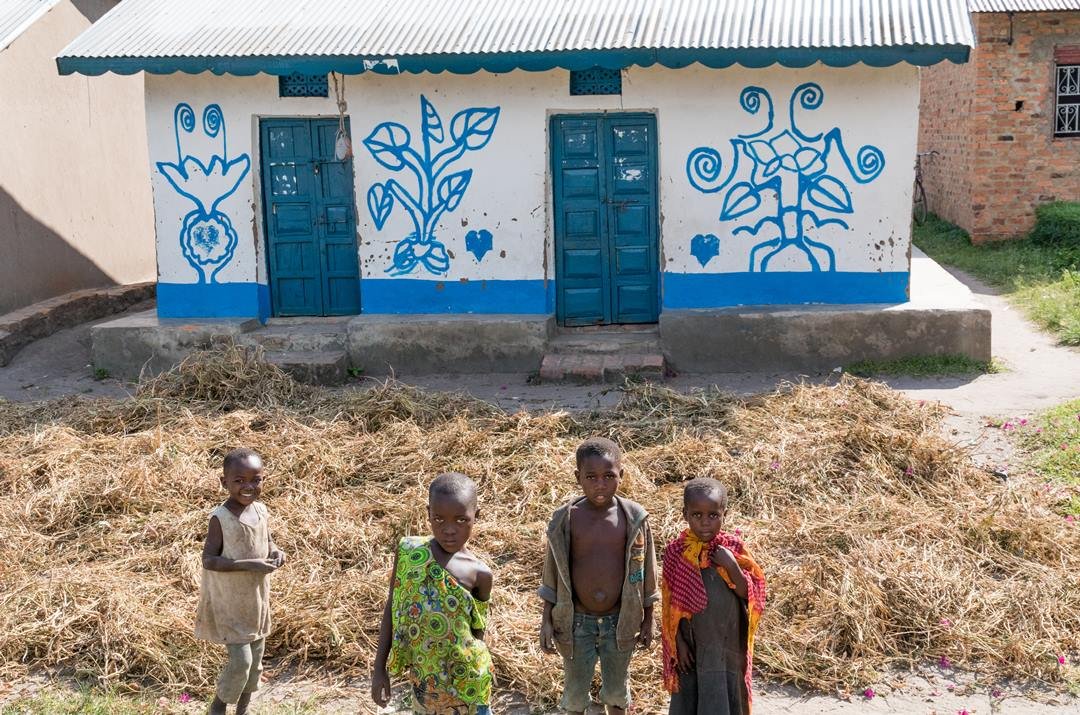Queen Elizabeth National Park on a Private Tour for 00 Latitude Safaris
For a destination where you can take safaris at 00 latitude, go on a private tour of Queen Elizabeth National Park. Part of the National Park spans the equator line and the exact spot is marked with monuments on either side.
The most popular National Park in Uganda, Queen Elizabeth National Park has a diverse ecosystem which includes fertile wetlands, humid forests, a vast spread of Savannah and glistening lakes.
Due to the diverse environment and terrain, there are many perfect habitats for the likes of big game, primates and lots of bird species.
The spectacular views of the park are best seen from Rwenzori Mountains which are the backdrop to this National Park. Some of the views include the enormous craters that are carved into the green hills or the Kazinga Channel and the wildlife along its banks.
There are guided tours to learn cultural history in some of the local communities where you will be entertained by storytelling, music, dance and more.
Top 8 Things to Do in Queen Elizabeth National Park







Travel Tips for Queen Elizabeth National Park
The Queen Elizabeth National Park is somewhere you can visit at any stage during the year. There are times however which are better suited to see some animals. The best time to see the wildlife in action is during the months of January/ February and June/ July when it is dry season and the animals gather around the river banks. If birdwatching is what you are interested in, then the wet season is when you should visit.
The many safari tours in Queen Elizabeth National Park vary in price throughout the year. The dry season is the more expensive time and wet season the least expensive. Many tour operators offer all-inclusive tours for the duration of your stay which include various safari tours, accommodation and campsite accommodation when on an overnight safari, all meals and soft drinks. Flights are the only thing not included normally.
When you are planning a safari tour in Queen Elizabeth National Park make sure the weather is suitable for what you want to see, for instance, birdwatchers are better going during the wet season. The weather is hot and a bit chilly at night so make sure you have an extra cardigan with you and waterproofs during the wet season. There are a lot of insects, therefore, you should have plenty of insect and mosquito repellant.
Like everywhere else in Uganda the temperatures vary very little throughout the year. Generally, the average temperature is 29 degrees Celsius during the daytime and 18 degrees Celsius when the sun goes down. The rainy season is when it rains more than normal during the months of March, April, May, October and November. September is usually the wettest month and January is the driest. It does rain every month.
Travel Tips for Queen Elizabeth National Park
The Queen Elizabeth National Park is somewhere you can visit at any stage during the year. There are times however which are better suited to see some animals. The best time to see the wildlife in action is during the months of January/ February and June/ July when it is dry season and the animals gather around the river banks. If birdwatching is what you are interested in, then the wet season is when you should visit.
The many safari tours in Queen Elizabeth National Park vary in price throughout the year. The dry season is the more expensive time and wet season the least expensive. Many tour operators offer all-inclusive tours for the duration of your stay which include various safari tours, accommodation and campsite accommodation when on an overnight safari, all meals and soft drinks. Flights are the only thing not included normally.
When you are planning a safari tour in Queen Elizabeth National Park make sure the weather is suitable for what you want to see, for instance, birdwatchers are better going during the wet season. The weather is hot and a bit chilly at night so make sure you have an extra cardigan with you and waterproofs during the wet season. There are a lot of insects, therefore, you should have plenty of insect and mosquito repellant.
Like everywhere else in Uganda the temperatures vary very little throughout the year. Generally, the average temperature is 29 degrees Celsius during the daytime and 18 degrees Celsius when the sun goes down. The rainy season is when it rains more than normal during the months of March, April, May, October and November. September is usually the wettest month and January is the driest. It does rain every month.

 © Copyright 2025 Private Tour Inc. All Rights Reserved.
© Copyright 2025 Private Tour Inc. All Rights Reserved.